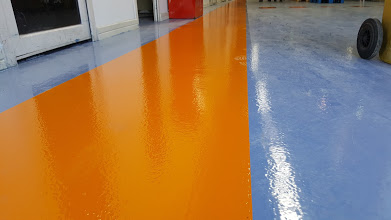
The properties of polymer composite materials depend greatly on the size of disperse phase particles. In 1989, using montmorillonite dispersion in nylon, Toyota Company developed polymer-clay composites which represent a new class of composite materials. Containing about 5% of clay nanoparticles, such composites allow improving mechanical and thermal properties with minimum compromise to shock characteristics and almost the same composite density as that of the base polymer. In case of nylon, the ultimate strength increases by 100-500%, and elasticity coefficient rises 2-3 times. On the basis of stated properties, Toyota experts believe that the application of such nanocomposite materials is promising in automotive and aerospace industries.
One can assume that introduction of nanoparticles into a polymer matrix will allow the production of new nanocomposites with enhanced properties.
The dependence of peeling resistance F1 (a) and the dependence of shearing resistance F2 (b) on the conditions of sample preparation: 1 – check sample, epoxy adhesive without any filler; 2 – epoxy adhesive + 5% of weight of nanofibers, 3 – epoxy adhesive + 10% of nanofibers.
Fig. 1 shows the results of research by Eric N. Gilbert and others form the Laboratory of Polymer Composites (University of Washington, USA). The study was to reveal mechanical characteristics of film epoxy adhesives produced by mixing of industrial epoxy resins (Epon 828, Epon 836 and D.E.R. 661) and modified with nanostructured aluminium oxihydroxide particles (nanosheets).
For system hardening, Amicure CG 1400 hardener was used. Nanofibers and the hardener were added to epoxy resins, and then the system was stirred for 15 minutes at the temperature of 52 ºС. The test was carried out with two aluminium sheets being glued (aluminium grade 2024-Т3, produced in the USA), the sheets had been previously degreased and primed with aluminium primer BR 6747-1. The adhesive was placed between the two sheets, and they were clamped together at the pressure of 310 kPa. The adhesive was hardened for 2 hours in an oven at the temperature of 177 °С. The rate of heating and cooling was 5 °С per minute. Five samples were used in each test. Shearing resistance tests were carried out on the Sintech stand according to the Boeing 7202 standard, applying a load with a constant traverse speed of 0.254 mm/min. Peeling resistance tests were also carried out on the Sintech stand according to the 7206 standard, type I.
Peeling strength of both samples modified with nanofibers was 30% higher than that of the check sample, and almost did not depend on the quantity of nanofibers (Fig. 1, a).
Shearing resistance test results (Fig. 1, b) show that after adding 5% of nanofibers to the adhesive, the test sample behaves similarly to the check sample. Increasing the weight of nanofibers up to 10% resulted in shearing resistance rise by about 12%.
Fig. 2 shows the results of another test of epoxy adhesive strengthening by means of nanostructured particles (the data are obtained by the group of Doctor of Chemistry V. N. Lisetskiy). In this figure: EA (ЭП) – epoxy adhesive, OS (ОР) – organic solvent.
Fig. 2. Tensile characteristics of epoxy resin: 0 – EA+OS; 1 – EA+OS+nanofibers (agglomerated); 2 – EA+OS+nanofibers partially deagglomerated by means of surfactant treatment.
The above results prove that a significant effect of tensile strength increase is observed only when nanofibers are deagglomerated. It is possibly due to the poor wetting of the surface of separate fibers in the agglomerate with adhesive. According to the researchers, one of the main objectives when creating nanofiber-strengthened polymers is effective nanofiber deagglomeration.
